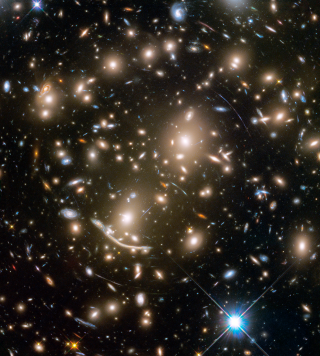Bibcode
Lucchini, Scott; D'Onghia, Elena; Aguerri, J. Alfonso L.
Bibliographical reference
Monthly Notices of the Royal Astronomical Society
Advertised on:
6
2024
Citations
14
Refereed citations
12
Description
The distribution of moving groups in the solar neighbourhood has been used to constrain dynamical properties of the Milky Way for decades. The kinematic bimodality between the main mode (Hyades, Pleiades, Coma Berenices, and Sirius) and Hercules can be explained by two different bar models - via the outer Lindblad resonance of a bar with a high pattern speed (~55 km s-1 kpc-1), or via the corotation resonance of a bar with a low pattern speed (~40 km s-1 kpc-1). Recent works directly studying the kinematics of bar stars and gas flows near the centre of the Galaxy have converged on the low pattern speed model. In this paper, we independently confirm this result by using Gaia DR3 to directly study the variation of Hercules across Galactic azimuth. We find that Hercules increases in Vϕ and becomes stronger as we move towards the minor axis of the bar, and decreases in Vϕ and becomes weaker as we move towards the major axis of the bar. This is in direct agreement with theoretical predictions of a low pattern speed bar model in which Hercules is formed by the corotation resonance with stars orbiting the bar's L4/L5 Lagrange points.
Related projects

Galaxy Evolution in Clusters of Galaxies
Galaxies in the universe can be located in different environments, some of them are isolated or in low density regions and they are usually called field galaxies. The others can be located in galaxy associations, going from loose groups to clusters or even superclusters of galaxies. One of the foremost challenges of the modern Astrophysics is to
Jairo
Méndez Abreu